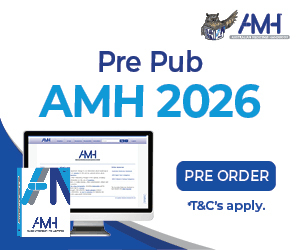“It’s an incredible privilege to be able to be in this role and I take this role and my responsibility very seriously,” says new Commonwealth Chief Nursing and Midwifery Officer Alison McMillan.
“I hope that I can bring strong leadership and commitment to both the nursing and midwifery professions across Australia as well as play an important role on the international arena working with nurses and midwives across the world to build professional capacity.”
Hailing from the UK, Alison undertook her nurse training within the hospital system in Sunderland, in the north east of England, during the early 80s.
The decision to pursue nursing was sparked while she worked as a pharmacy technician and experienced the rewards of engaging with people and providing care such as first-aid.
As a fledgling staff nurse, Alison worked in the Accident and Emergency (A&E) Department.
It was there, on a typical shift carrying out triage, that she spotted an advertisement in a nursing journal by the Victorian Government calling on UK nurses to consider moving abroad to work in the state’s health system.
The prospect of an adventure appealed to Alison and she packed up and moved to Melbourne in 1987 along with her husband and soon began working at the Austin Hospital.
“There were many commonalities in nursing between England and Australia so it was a relatively easy transition,” Alison recalls of her early impressions.
“But the opportunities provided in the Australian health system were far greater than they ever were in England so it took me in a direction that it probably wouldn’t have taken me if I’d stayed.”
Alison worked clinically at the Austin for more than a decade.
During that period, she also undertook a Bachelor of Education and a Masters of Business Administration.
As her career progressed, Alison shifted into a number of executive roles across Victoria’s health system, including a stint as the Executive Director of Nursing at the Royal Melbourne Hospital.
In 2011, she was appointed Victoria’s Chief Nurse and Midwifery Officer, a position she held for five years that enabled her to advocate further for the professions.
“What was emerging at the time was the increasing use of Assistants in Nursing (AINs) and the re-emergence of enrolled nurses into the Victorian health system,” Alison recalls.
“The nursing profession was telling me that understanding the responsibilities of a registered nurse, an enrolled nurse and an assistant in nursing needed clarity.
“So we undertook work in producing training videos and detailed educational material to be able to clarify the roles and responsibilities the whole healthcare team play in ensuring safe and quality care for all patients.”
Alison lists the opportunity to connect with and learn from frontline nurses and midwives as a highlight.
“I went and worked alongside nurses at the frontline and that was an incredibly privileged opportunity for me. To see and learn from those at the frontline is something I continue to remind myself I need to do. I need to listen and hear the voices of all nurses and midwives.”
A keen interest in emergency management and disaster response has also formed a significant part of Alison’s career.
In 2019, she received a National Emergency Medal, recognising her service in the aftermath of the Black Saturday bushfires.
Before becoming Australia’s Chief Nursing and Midwifery Officer, she held the role of Deputy Director of Strategy and Policy, Emergency Management, with Victoria’s Department of Health and Human Services.
“The role in emergency management in government is to provide protection to the community so in many ways it has a great synergy with nursing,” Alison says.
“You’re working in planning and policy to protect the Victorian community in times of crisis and emergency and that comes from planning preparation response, whether it’s today for instance with the coronavirus, or recently with the bushfires.
“My roles in emergency management drew on the sorts of skills and capabilities I developed over my nursing career about understanding Australian communities, working with people and the pragmatic components of planning and working as part of a team.”
Alison nominates the Bourke Street attack that took place in 2017, where six people were killed, as one of the most challenging incidents.
“It was a time when all Victorians saw a terrible tragedy and there was a need for the health system to respond quickly to such a large number of people who were critically injured. There was a need to come together as a community in strength at a time of great sadness.”
Last November, Alison took over from Adjunct Professor Debra Thoms as the nation’s Chief Nursing and Midwifery Officer.
The role offers an opportunity to shape and influence policy and decision-making at the top level, Alison says.
The biggest issues facing nursing and midwifery?
“We need to make sure that we are serving the Australian community in the best way we can,” Alison suggests.
“There are areas, particularly some of those highlighted in the recent Review of Nursing Education, the growing burden of chronic disease and an ageing workforce that demand the nursing profession is ready and able to meet community health needs into the future.
“For midwifery, we need to continuously promote and encourage the importance of women having choice in their maternity care and make sure we have a system that allows them to make the choice that’s best for them and their baby and family.”
Alison says key areas of focus throughout this year include the launch of the Nursing Toward 2030 strategy, consideration of recommendations from the Educating the Nurse of the Future report, and further work on COAG’s recently released report on women-centred care.
As the International Year of the Nurse and Midwife moves into full swing, Alison says the celebration provides a significant opportunity to recognise the vital contributions nurses and midwives make to health outcomes and raise the profile of the professions.
In her leadership role, she hopes to position nursing and midwifery as key components in the healthcare provided to Australians and says the professions must capitalise on all opportunities to safeguard the future.
“It [2020 Year of the Nurse and Midwife] creates an opportunity to remind everyone of the enormous contribution nurses and midwives make to the Australian community. We should take every opportunity to celebrate that and continue the important role we play.”









2 Responses
Thanks for acknowledging the auslan lady today. They are not appreciated enough .
I respect all nurses, but, in regards to your opinion on the vaccine, please be the first in Australia to get the jab. Show us how it’s done, then I’ll respect you even more.